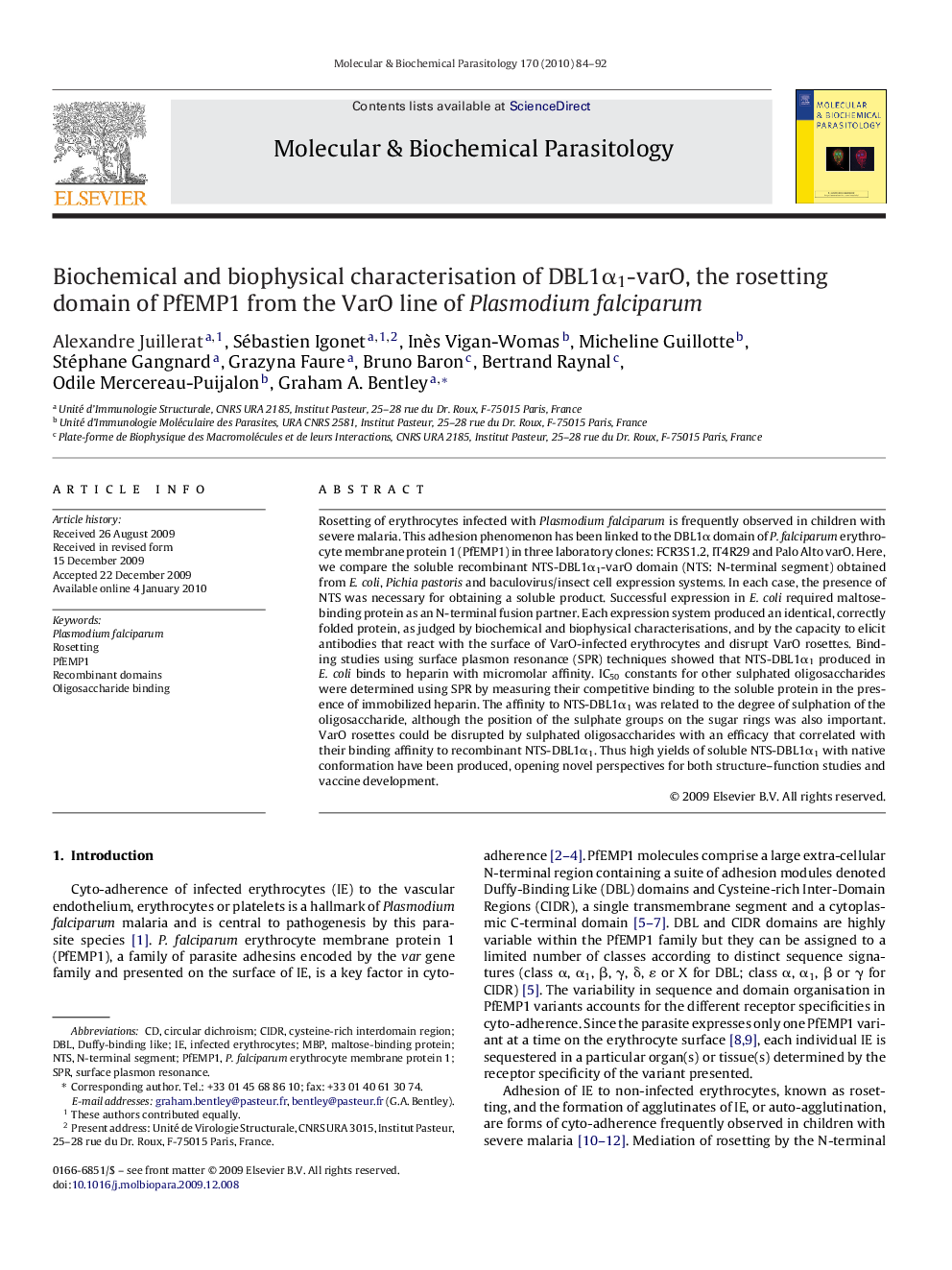| کد مقاله | کد نشریه | سال انتشار | مقاله انگلیسی | نسخه تمام متن |
|---|---|---|---|---|
| 5915712 | 1570658 | 2010 | 9 صفحه PDF | دانلود رایگان |

Rosetting of erythrocytes infected with Plasmodium falciparum is frequently observed in children with severe malaria. This adhesion phenomenon has been linked to the DBL1α domain of P. falciparum erythrocyte membrane protein 1 (PfEMP1) in three laboratory clones: FCR3S1.2, IT4R29 and Palo Alto varO. Here, we compare the soluble recombinant NTS-DBL1α1-varO domain (NTS: N-terminal segment) obtained from E. coli, Pichia pastoris and baculovirus/insect cell expression systems. In each case, the presence of NTS was necessary for obtaining a soluble product. Successful expression in E. coli required maltose-binding protein as an N-terminal fusion partner. Each expression system produced an identical, correctly folded protein, as judged by biochemical and biophysical characterisations, and by the capacity to elicit antibodies that react with the surface of VarO-infected erythrocytes and disrupt VarO rosettes. Binding studies using surface plasmon resonance (SPR) techniques showed that NTS-DBL1α1 produced in E. coli binds to heparin with micromolar affinity. IC50 constants for other sulphated oligosaccharides were determined using SPR by measuring their competitive binding to the soluble protein in the presence of immobilized heparin. The affinity to NTS-DBL1α1 was related to the degree of sulphation of the oligosaccharide, although the position of the sulphate groups on the sugar rings was also important. VarO rosettes could be disrupted by sulphated oligosaccharides with an efficacy that correlated with their binding affinity to recombinant NTS-DBL1α1. Thus high yields of soluble NTS-DBL1α1 with native conformation have been produced, opening novel perspectives for both structure-function studies and vaccine development.
We compare the soluble recombinant NTS-DBL1α1-varO domain obtained from E. coli, Pichia pastoris and baculovirus/insect cell expression systems by biochemical, biophysical and immunological methods. Competitive binding of NTS-DBL1α1 (1 μM) to immobilized heparin in the presence of different oligosaccharides: dextran sulphate (â); fucoidan (â³); heparin (â¦); heparan sulphate (â); chondroitin sulphate A (â´); hyaluronic acid (â¡).72
Journal: Molecular and Biochemical Parasitology - Volume 170, Issue 2, April 2010, Pages 84-92